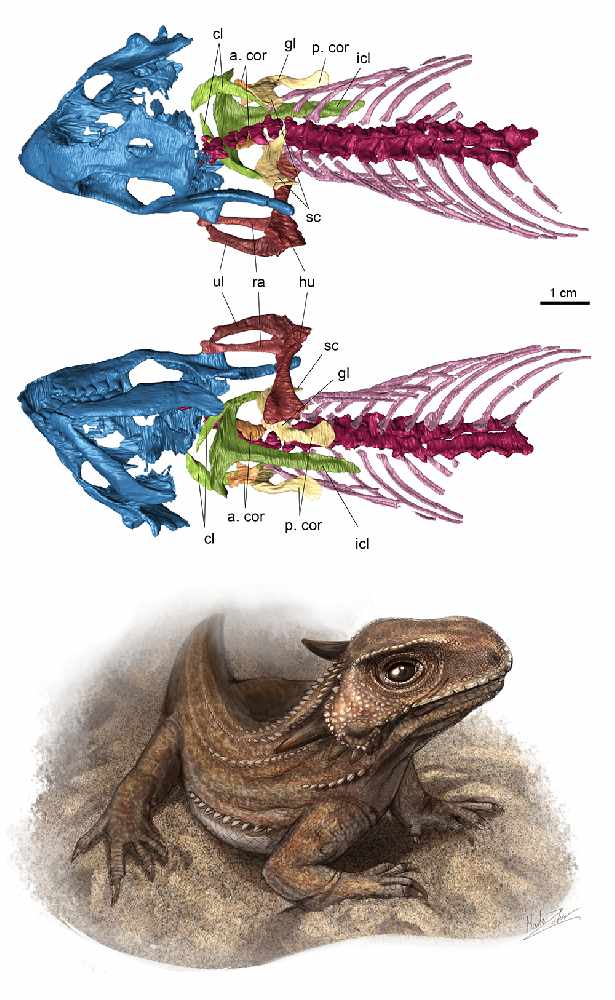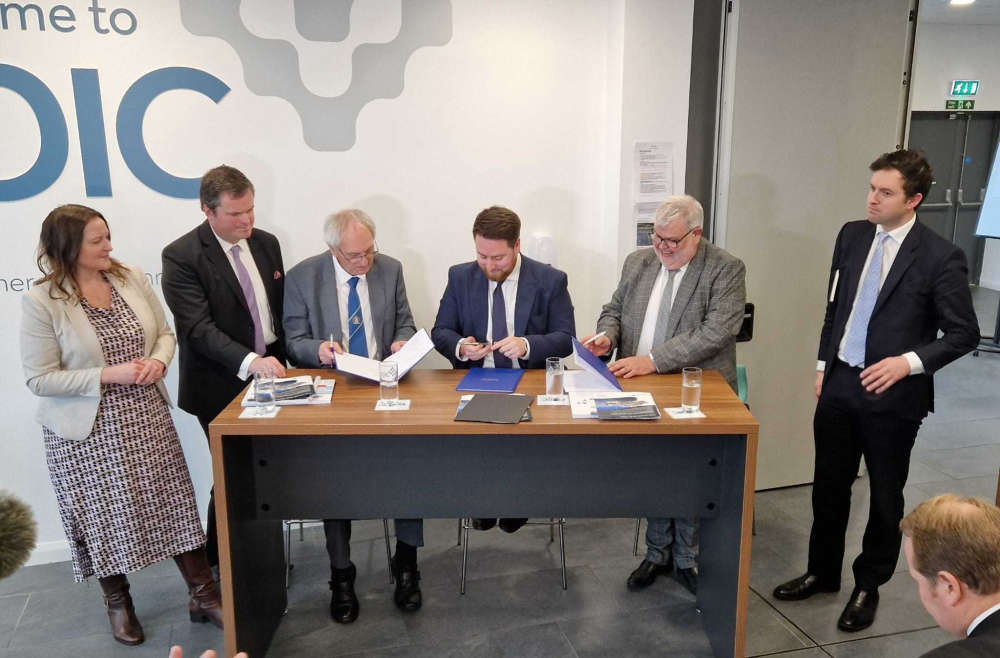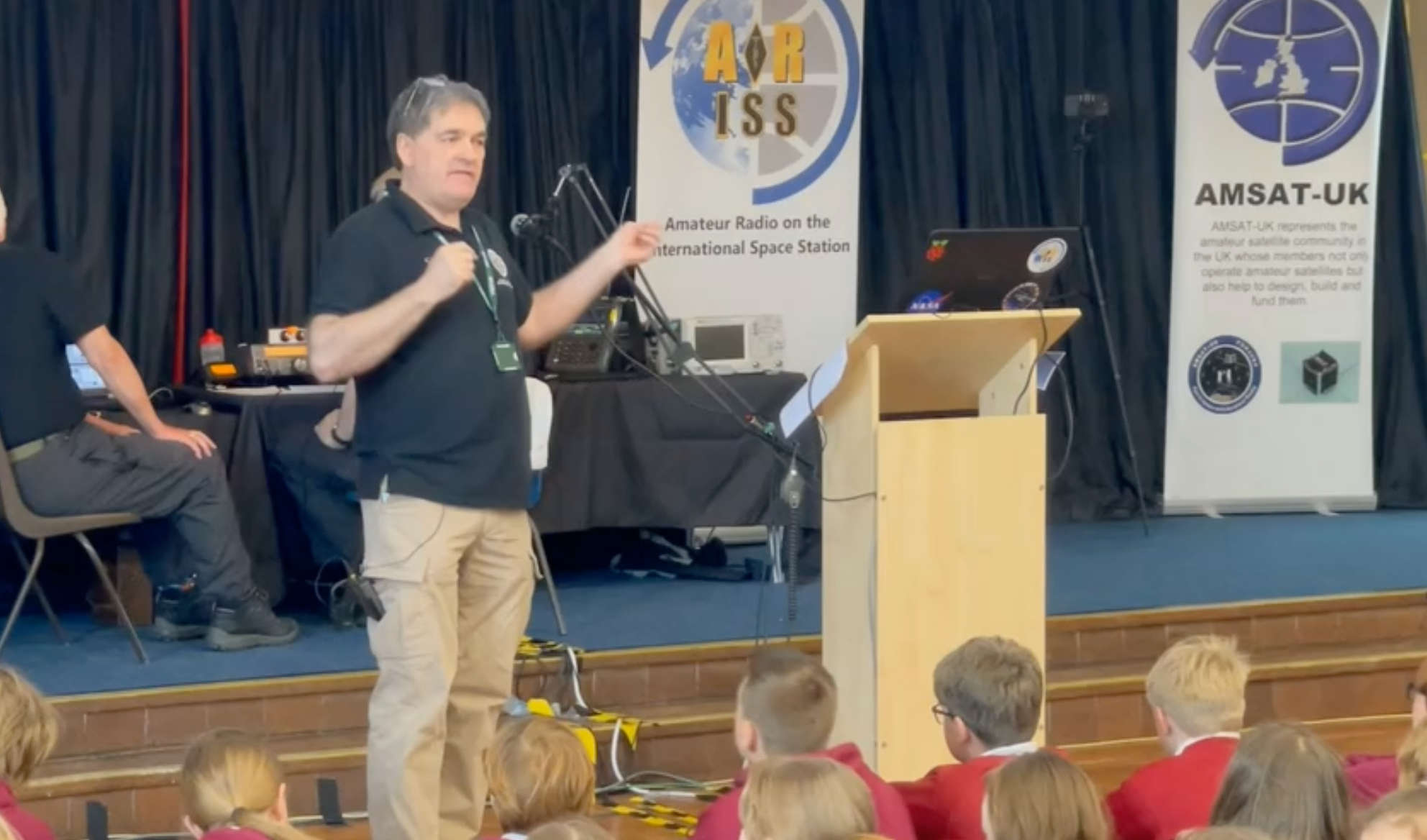
It shows connections with Russia
The reptile, called Kapes, is a small lizard-like creature with a spiny skull. However, the fossil is delicate, and started to break up when Dr Rob Coram began to clean it up.
Dr Coram said: “I tried everything I could. I have had a lot of experience of removing rock from fossils using a fine needle and working under the microscope. But this one was a nightmare. When I touched it with a needle, small pieces of bone fell off.”
Dr Coram contacted colleagues at the University of Bristol, and they arranged to make a CT scan. The project of interpreting the scans was given to Marta Zaher, who was a visiting summer student at the University of Bristol, from Zagreb in Croatia.
Marta said: “The scans are amazing. They show every detail of the tiny, five-centimetre (two inch) long skull. You can see each tooth, and even the wear patterns. Almost all the tiny bones of the palate and braincase are there.”
Marta’s job was to put together a 3D digital model from the CT scans, and this revealed that the front half of the animal was there – the skull, neck, shoulder girdle, arms, and front half of the torso.
She added: “This identifies the animal without question as a procolophonid. These lived worldwide at the time, and they were important plant-eaters, with broad teeth fused to their jaws, and which wore down under grinding from the tough plant food.”
Several years ago, less complete specimens of the procolophonid had been found in the Devon rocks, and two academics then at the University of Bristol, Patrick Spencer and Glenn Storrs, had suggested the Devon animal was the same as Kapes from central Russia.
Professor Mike Benton from the University of Bristol’s School of Earth Sciences added: “The new study confirms that the two animals are very close relatives, two species of the genus Kapes.”
“This is most unusual, to have evidence of a biogeographic connection over thousands of kilometres. In the Middle Triassic, there was dry land in the UK and in Russia, but the area in between was filled with the Muschelkalk Sea, covering Germany and much of central Europe.”
 Young voices barely registered in devolution consultation
Young voices barely registered in devolution consultation
 Energetic Pretty Woman is a must-see
Energetic Pretty Woman is a must-see
 Devoncast - Police and Crime Commissioner election special
Devoncast - Police and Crime Commissioner election special
 New pledge on South Hams Freeport funding
New pledge on South Hams Freeport funding
 Axminster children connect with space station
Axminster children connect with space station
 East Devon should get new CEO
East Devon should get new CEO
